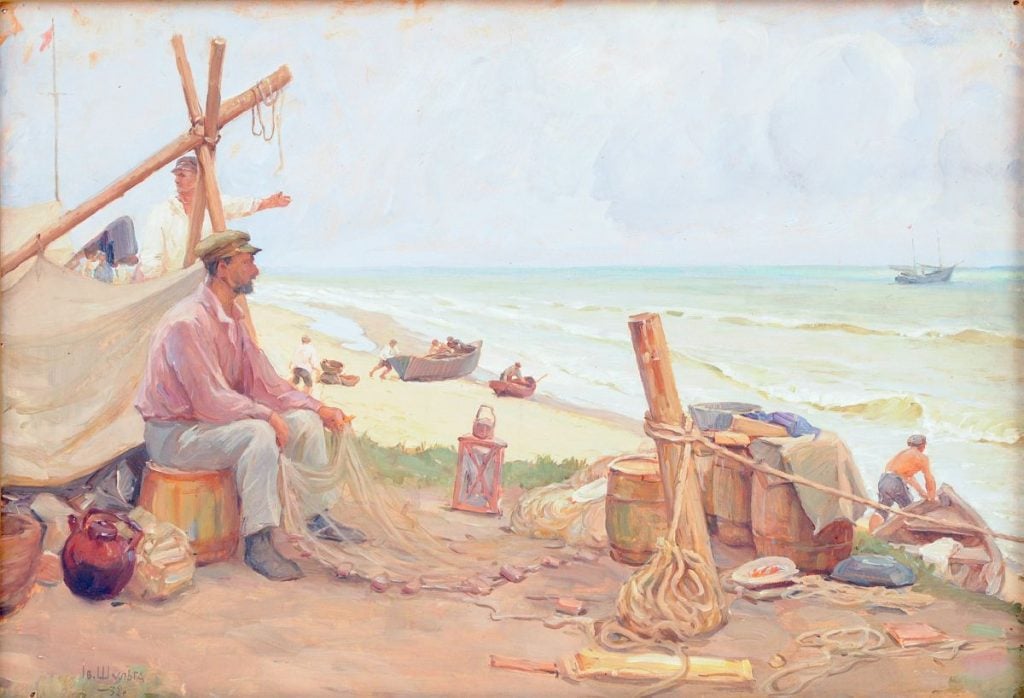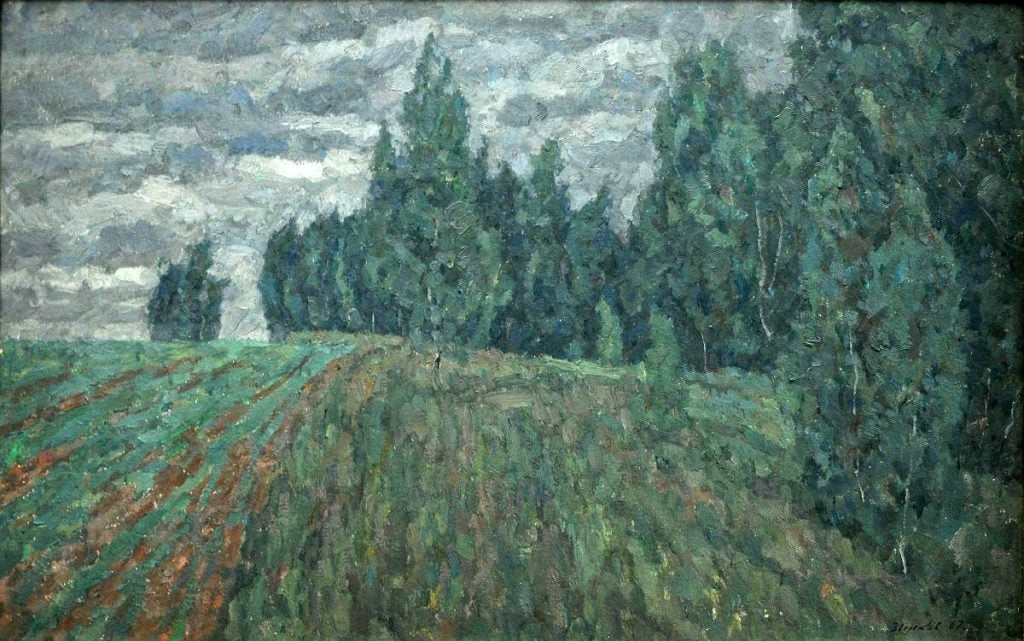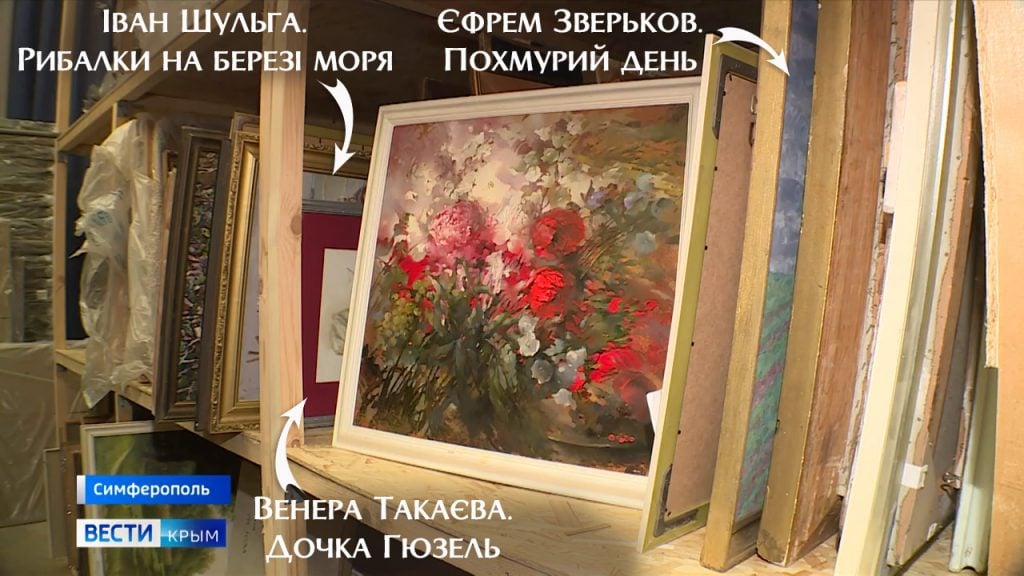Museums & Institutions
Ukraine’s Kherson Art Museum Identifies 100 Paintings Looted by Russia
The paintings were identified thanks to a "propaganda" video recorded in a Crimean museum.

The paintings were identified thanks to a "propaganda" video recorded in a Crimean museum.

Adam Schrader

The Kherson Art Museum has identified 100 paintings that were allegedly looted by Russian forces, along with nearly 15,000 other objects that have been taken amid the war in Ukraine.
“Looters document their crimes with their own hands, and this allows us to determine the whereabouts of at least some of the stolen art,” the museum said on social media.
Of the 100 artworks, 99 of the identified paintings ended up in Crimea, a peninsula on the Black Sea that was illegally annexed by Russia in 2014 in the buildup to the current war. Ukraine and its allies consider Crimea to be Ukrainian territory occupied by Russia.
The Kherson Art Museum said that the works were identified thanks to a “propaganda video” shot at Crimea’s Central Museum of Tavrida in September 2023 that aired on Russian television.
The Crimean museum did not respond to a request for comment by press time.

Efrem Zverkov. Gloomy Day (1967). Photo courtesy of Kherson Art Museum.
Another work, Phaeton in Sevastopol by Konstantin Korovin, has been traced to Henichesk, a port city along the Sea of Azov in the Kherson oblast, though its exact location is unknown.
Among the works identified is Fishermen On The Seashore (1932) by Ivan Shulha, who made work in the Socialist Realism tradition of the Soviet Union that idealized the working class. Others include Daughter of Guzel (1967) by Venera Takaieva, and a 1967 oil painting by Yefrem Zverkov—a founder of the “strict style” movement within Socialist Realism.
The video filmed at the Central Museum of Tavrida also showed three additional oil paintings by Ksenia Stetsenko, Anatolii Platonov, and Antonin Fomintsev previously reported by Ukraine as having been looted by Russia that still have not been returned.

The Kherson Art Museum has identified 100 paintings that were allegedly looted by Russia thanks to a video filmed in a museum in Crimea. Photo courtesy of Kherson Art Museum.
The museum estimates that the 100 works of art documented represents “less than 1 percent” of what has been stolen.
“Every painting, every graphic work, every piece of artwork, everything we identify, is indisputable proof that the stolen works (at least these) are in the hands of Russian art looters,” the Kherson Art Museum said. “And to prevent the criminals from saying that ‘they weren’t there,’ as is their habit, we are recording everything we see in the photos and videos from Crimea and Henichesk.”
The artworks, taken from the museum in November 2022, were reported at the time to have been “wrapped in some kind of rag” rather than proper packing supplies and loaded on trucks and buses to be transferred to Simferopol in Crimea. Some works looted from the Kherson Art Museum and other institutions have since appeared on the black market.